Cooling Noise and Power
For my last few tests, rather than focusing on in game performance, I like to check out other aspects of video card performance. These are also the most important ways to differentiate the performance between cards that have the same GPU. To start things off I took a look at power usage.
For this, our new test setup utilizes the Nvidia-designed PCat v2 along with cables to handle both traditional 6 or 8-pin connections as well as the new 12VHPWR. The PCat also utilizes a PCIe adapter to measure any power going to the card through the PCIe slot so we can measure the video card wattage exclusively, not the entire system as we have done in the past. I test with a mix of applications to get both in game, synthetic benchmarks, and other workloads like Blender and AIDA64. Then everything is averaged together for our result. I also have the individual results for this specific card and I document the peak wattage results as well which is almost always Time Spy Extreme but this time was FarCry 6. The Dual RTX 4060 is down near the bottom of the chart here with its 143-watt average putting it right with the RTX 3050 and almost 60 watts lower than the RX 7600 and even more to the older 6650 XT.


With having exact peak wattage numbers when running Time Spy Extreme I was also able to put together a graph showing the total score for each watt that a card draws which gives us an interesting look at overall power efficiency in the popular and demanding benchmark. The Dual RTX 4060 scored 30.86 points for each watt that it used which put it right with the overclocked RTX 4070 Ti and the RTX 4060 Ti Founders Edition. This is at the bottom of the 4000 series cards but there is still a big gap between this and all of the older cards as well as AMDs new 7600.

My next round of tests were looking at noise levels. These are especially important to me because I can’t stand to listen to my PC whirling. Especially when I’m not in game and other applications are using the GPU. For my testing, though I first tested with the fan cranked up to 100% to get an idea of how loud it can get, then again at 50% to get an idea of its range. The Dual RTX 4060 is down at the bottom of the chart for both with 55.6 db at 100% fan speed and 37 db at 50% fan speed. The fan RPMs on the other hand show the dual fan Asus Dual RTX 4060 at 3277 RPM which is a lot higher up in the chart than the noise levels showing how well Asus did with the design.
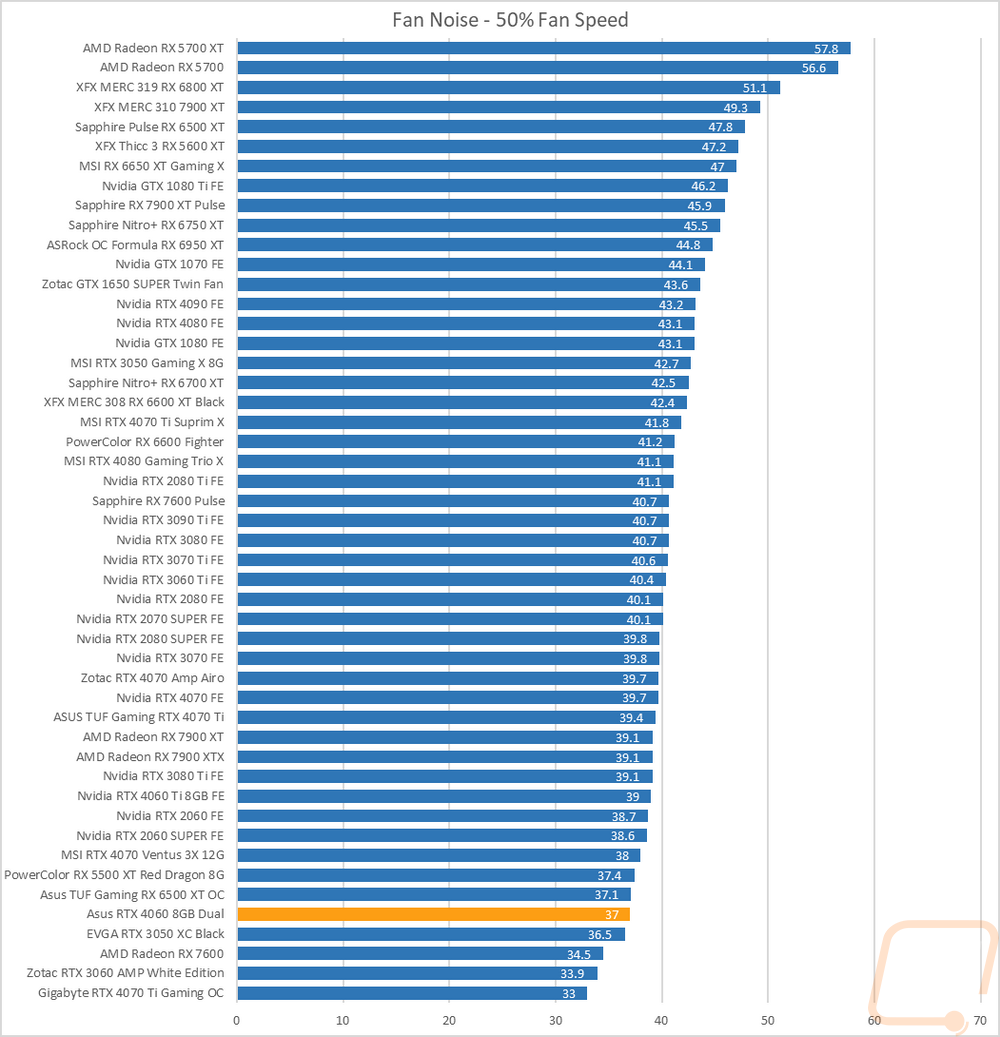
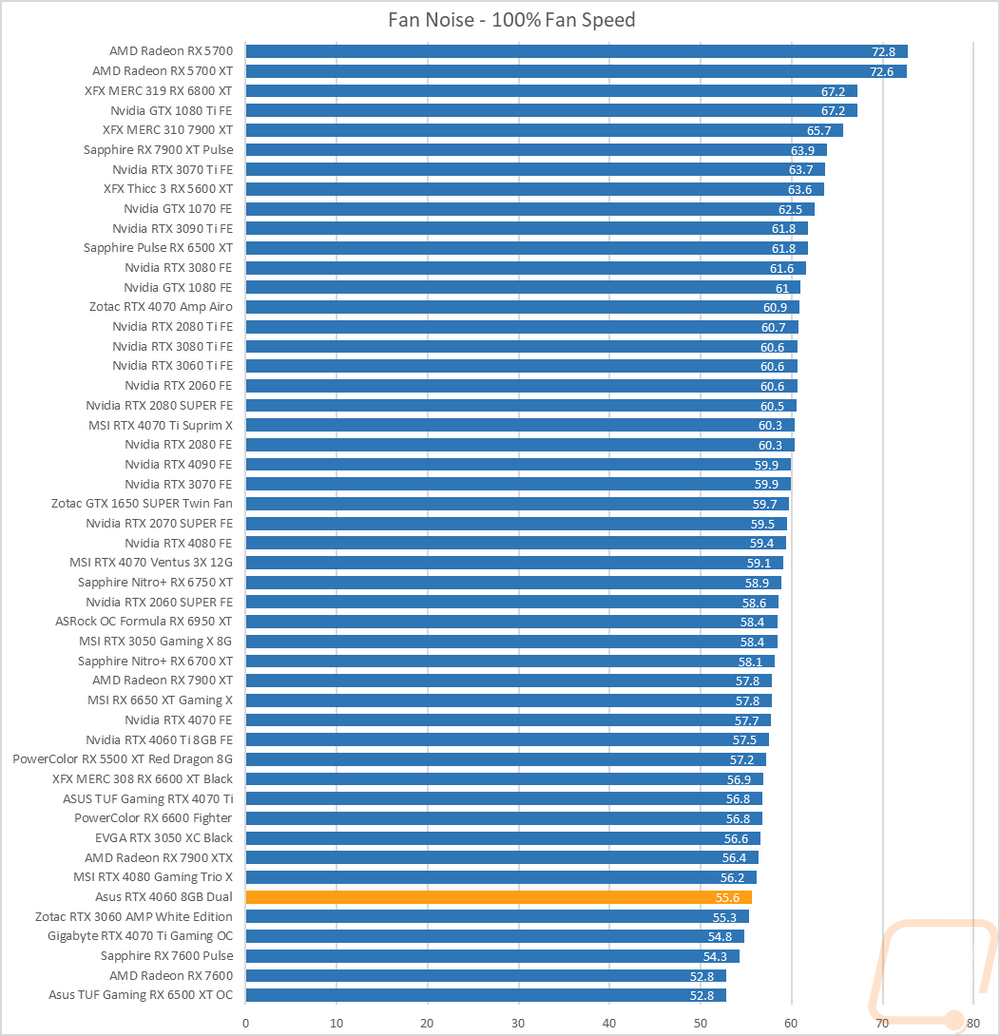
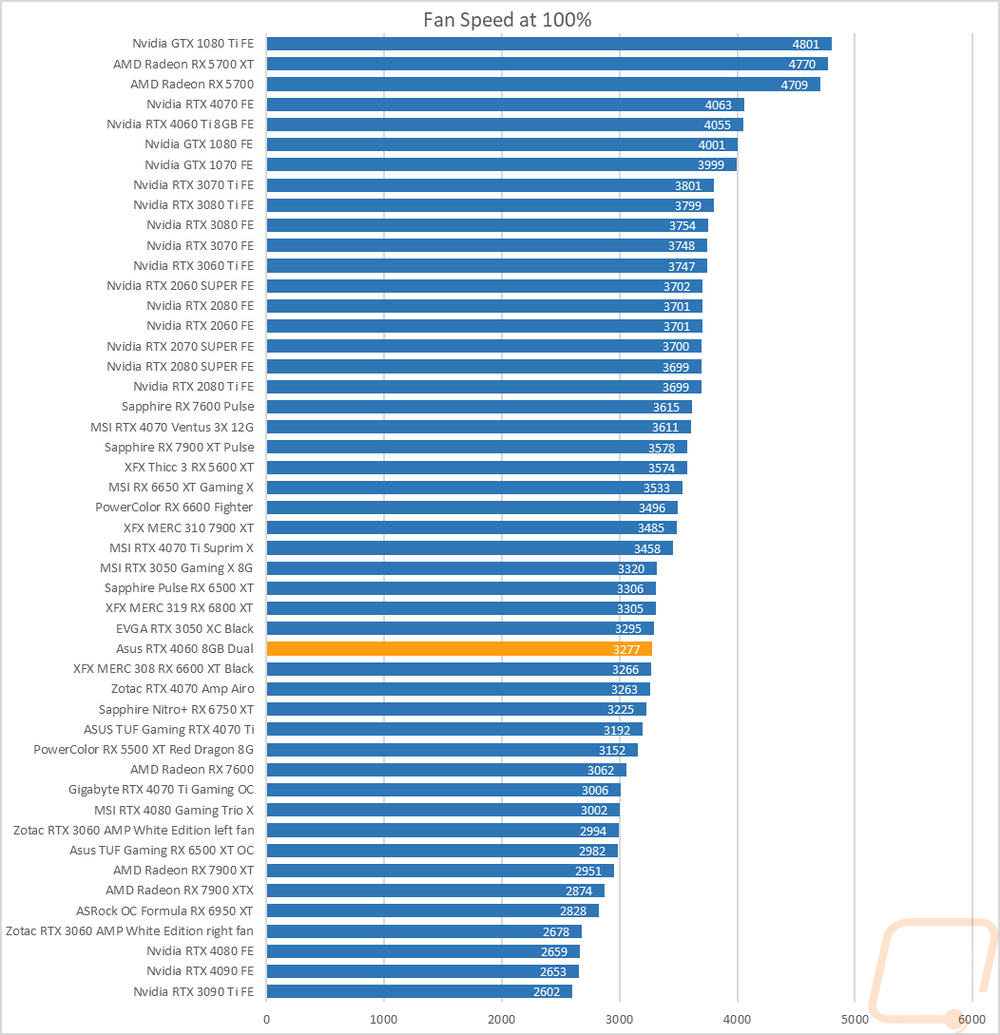
I also take a look at noise performance while under load. For that when running AIDA64’s stress test I wait until the temperature of the card has leveled off and then measure how loud things are when the card is at its worst-case scenario with the stock fan profile. Here the Dual RTX 4060 was even a little lower in the chart with just two cards quieter.
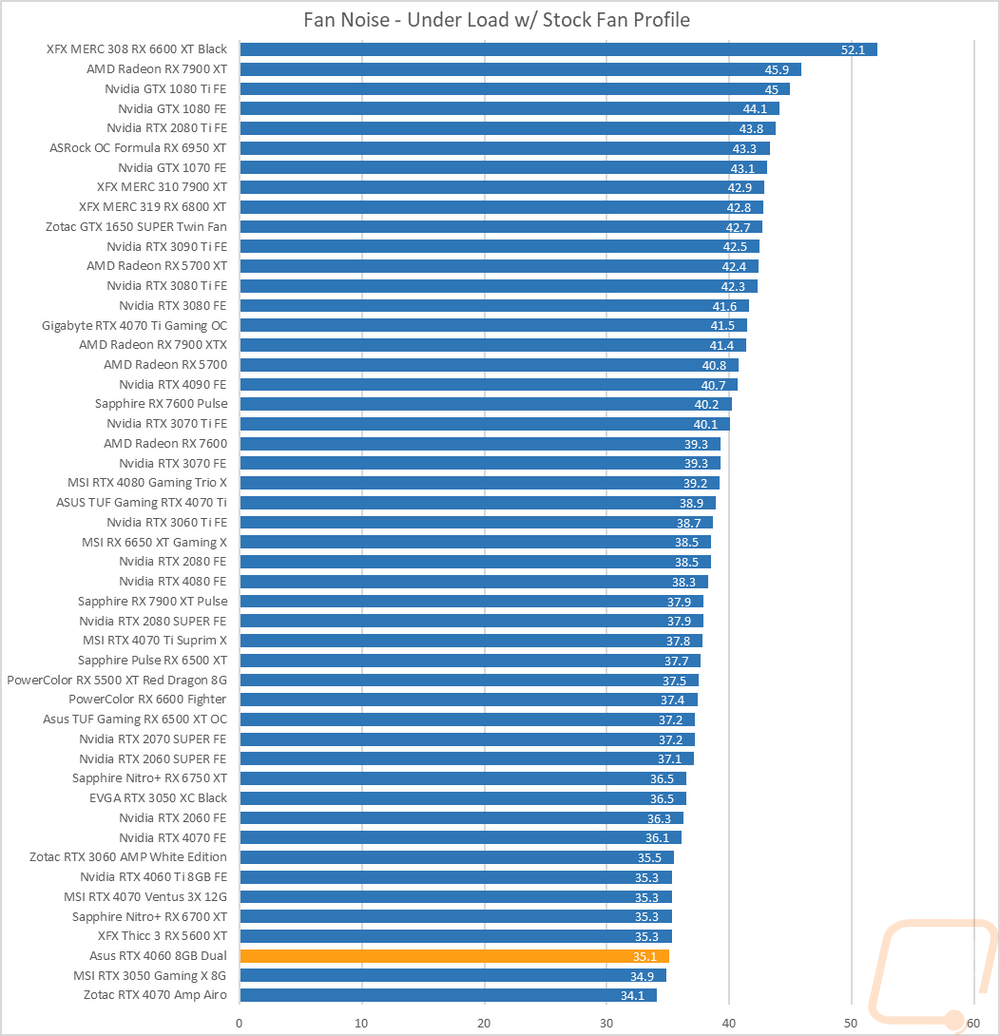
To finish up my testing I of course had to check out the cooling performance. To do this I ran two different tests. I used AIDA64’s Stress Test run for a half-hour each to warm things up. Then I documented what temperature the GPU leveled out at with the stock fan profile and then again with the fans cranked up to 100%. With the stock profile, the Dual RTX 4060 was running at 55c which puts it near the bottom of the chart. Even more impressive though is when you figure in how fast the fans were running at the time with the stock fan profile running at just 34% explaining why it was so quiet under load as well. The GPU hotspot was warmer at 69c. Then with the fans cranked up, the GPU hotspot was improved to 57c and the overall temperature was down to 45c which was again down near the bottom of our charts and near the RTX 3050 XC Black. The delta between the stock fan profile and 10)% fan speed was 10c which is average but with the low fan profile we know that the Dual RTX 4060 wasn’t working too hard, it doesn’t however have a huge upside to cranking the fans up too much.
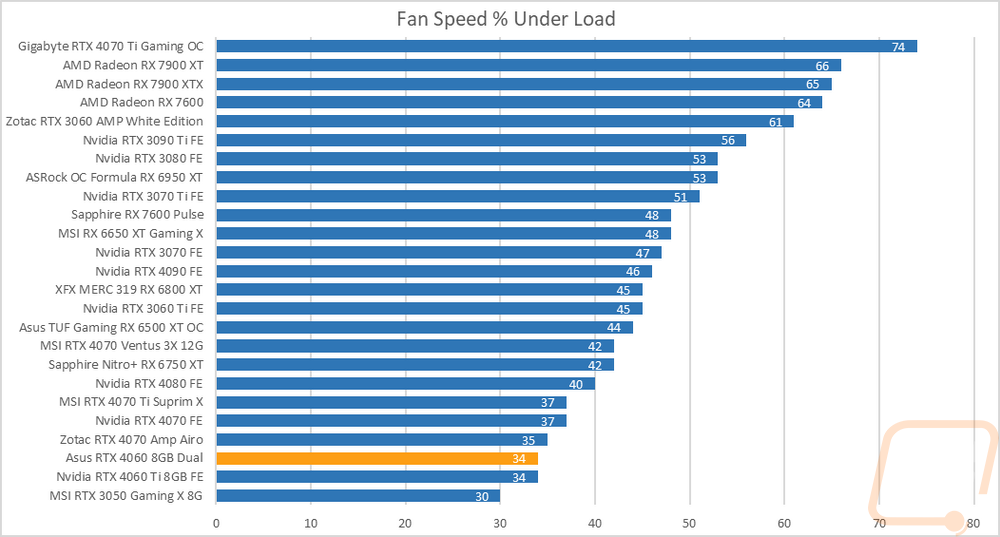
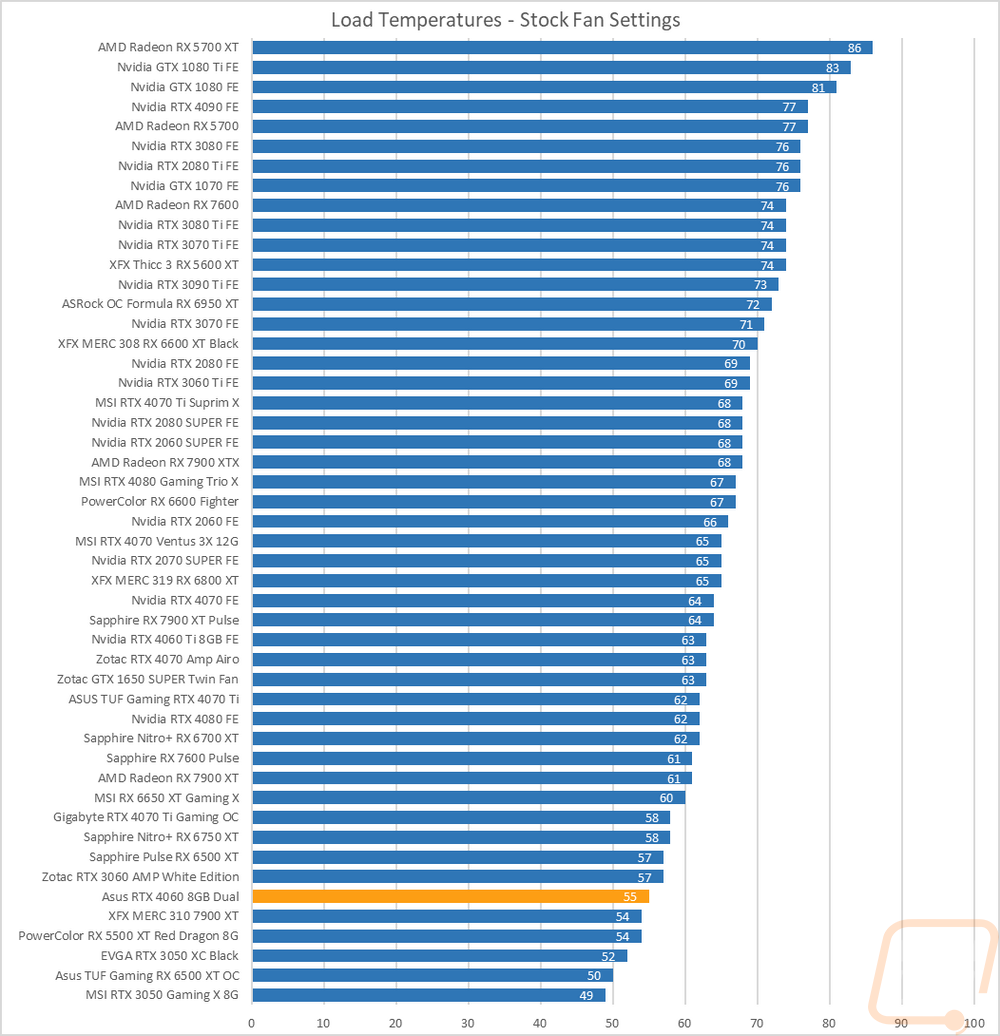
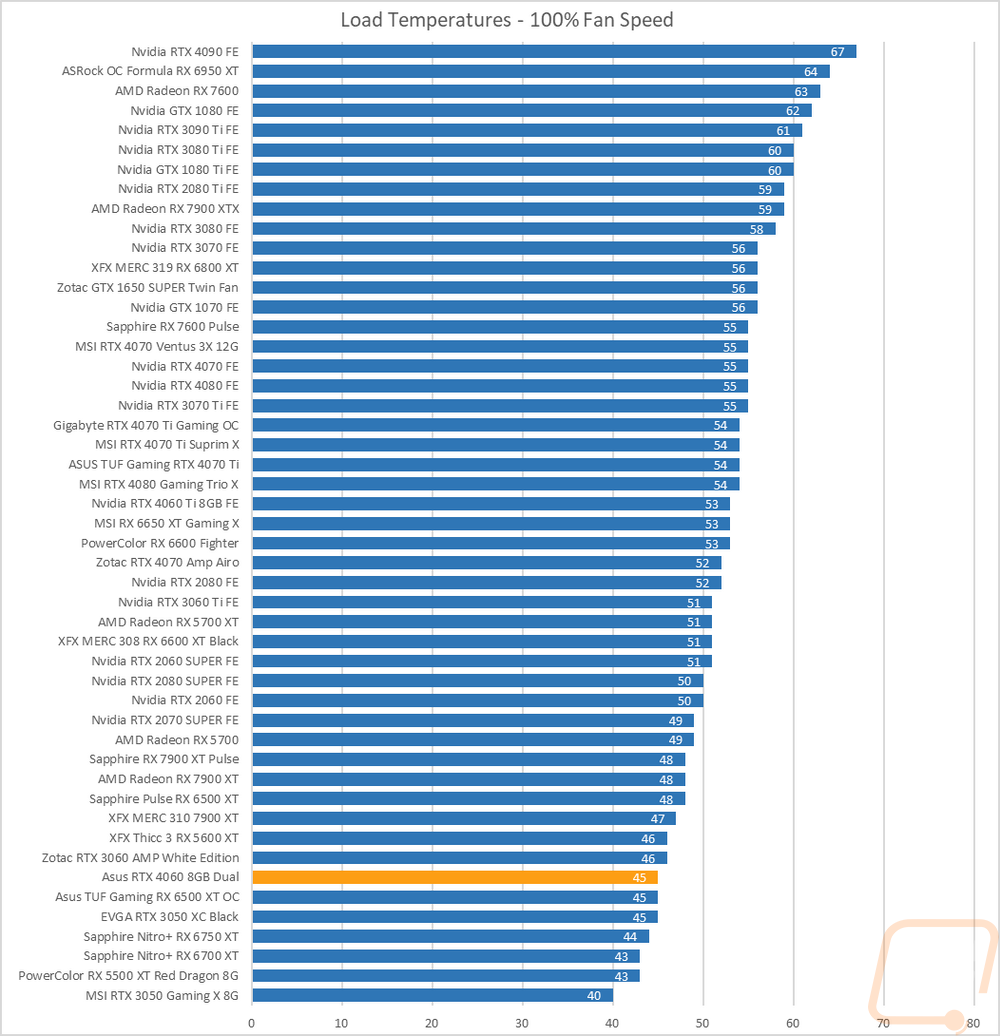
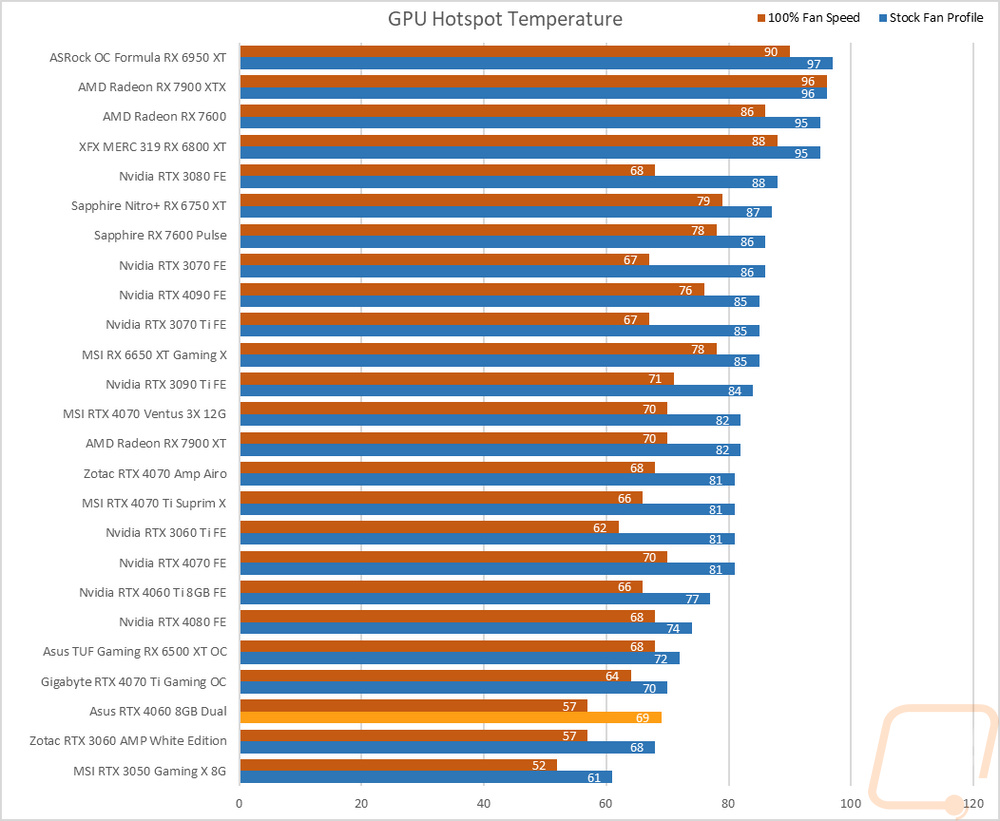
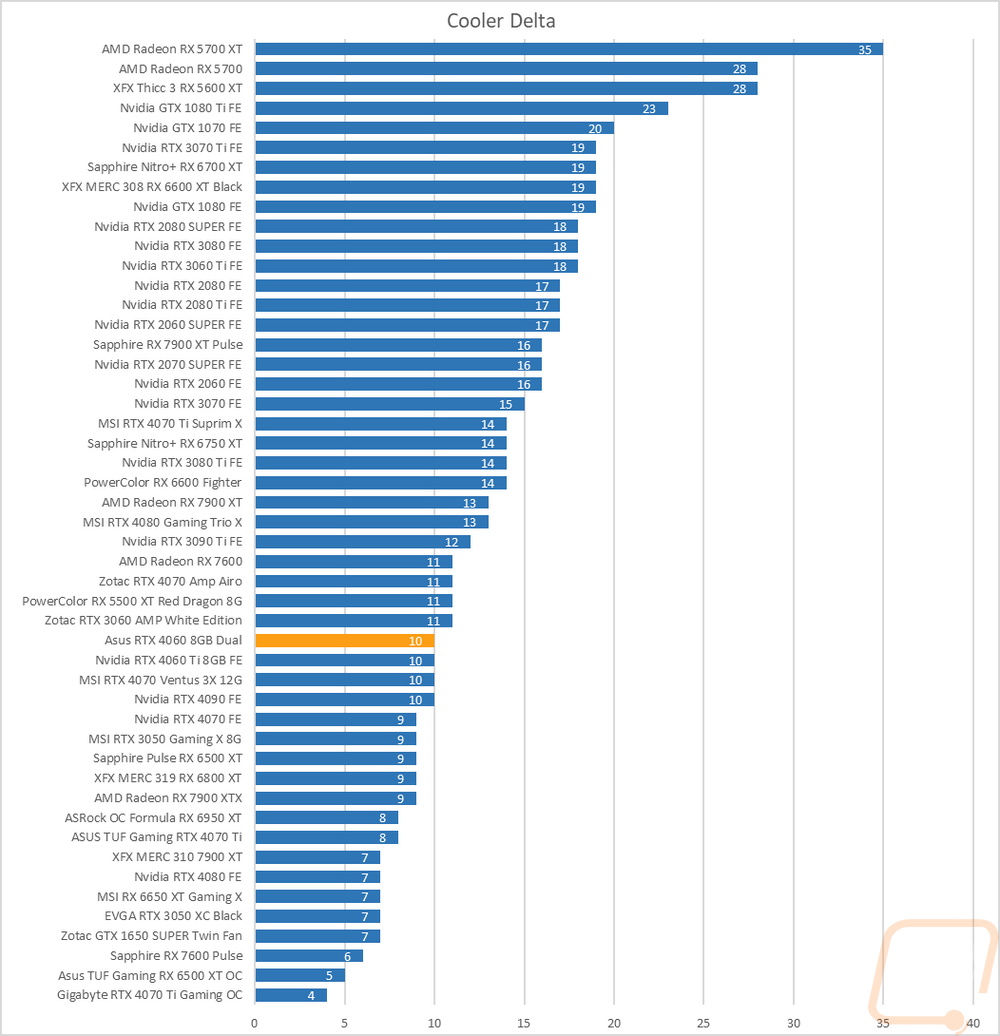
While running the stock fan profile testing I also took the time to get a few thermal images so we could see what is going on. The Dual RTX 4060 had just one warm spot on the fan side on the bottom right corner of the left fan which is closest to the GPU and gets a little less airflow but overall that side was very cool. The top edge shows the hotspot right on the heatpipe up top which isn’t a surprise at all and the PCB is warmer but there isn’t too much heat coming out this side with the horizontal heatsink layout. Then on the back, the metal backplate doesn’t have any main hot spots. There is a warmer down under the card and some on the exposed PCB near the power connection.





